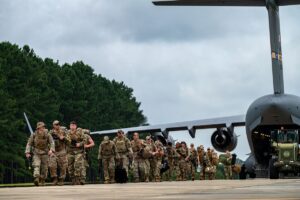
The U.S. Air Force Special Operations Command (AFSOC) is interested in the possible incorporation of new features on transport aircraft, including electronic attack and standoff kinetic strike, the AFSOC commander said on Sept. 7. "Whether it's electronic attack or long-range precision fires, you could kind of use your imagination to figure out many things that you might do with a large volume carrier like a C-130 or a C-17," Air Force Lt. Gen. James Slife, the head of AFSOC, told…














